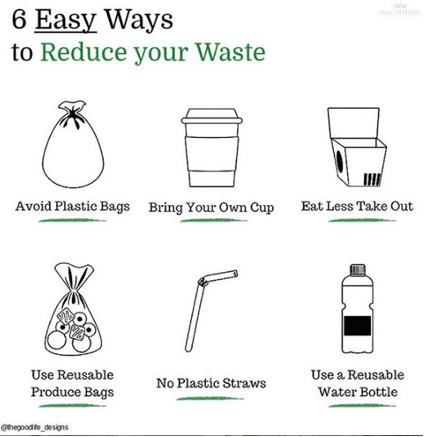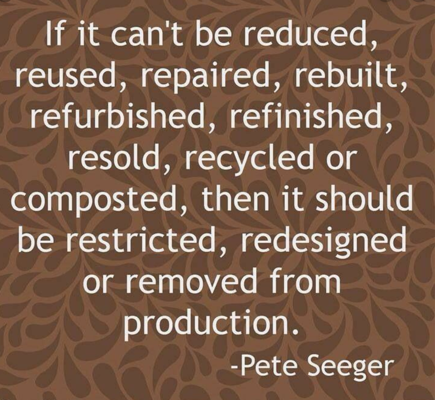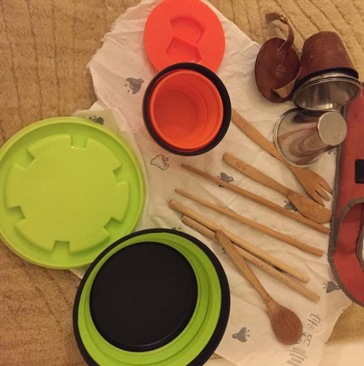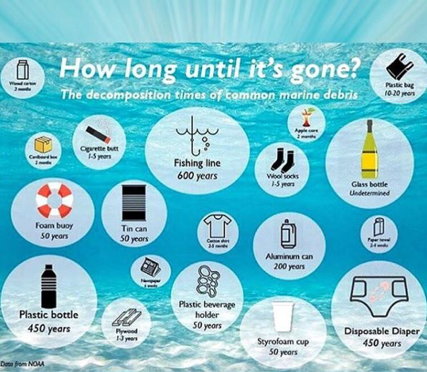3 Home
3.1 SAMPLE LETTER TO PARENTS
Plastic Free Campus wants to encourage school communities to transition to more sustainable consumption. It is important parents are involved and know as early as possible. They will play an important role in mirroring and reinforcing these behaviours at home.
The SAMPLE LETTER TO PARENTS should be adapted to the school’s circumstances. Send this letter inviting parents to a school event (perhaps held in conjunction with other events like a parent-teacher consultation evening) to explore how families can reduce plastic consumption in the home. Consider a #takeitback hashtag (leave no trace) so all items brought into school go home at the end of the day.
3.2 PLASTIC FREE LIVING WORKSHOP
Student and parents need advance preparation to implement PFC principles for events, projects or to make changes. Holding a plastic-free living workshop will help the school community and inspire further changes within households.
The following suggestions and advice can be presented to parents by the EcoCrew, through a standard presentation, a series of skits, photograph or art campaign, or any other idea that it feels will resonate with the school community. The information below can also be adapted to suit your school or environment
How long till it’s gone
Research your own charts and find out other items that relate to where you live.
So what does it mean “it’s gone”? For most plastics “decomposition” actually means that the plastic has broken-up into smaller pieces or micro-plastics. These never go away! They now are in our air, our water, our food and even our bodies! Unlike natural products like cotton or wood which break-down into organic compounds, plastic never goes away!
The Rs of Zero waste
Above all Refuse all plastic when you can, then reduce the amount you already have or purchase. Reusing a plastic carrier bag as many times as possible is better than using it once – the same with any plastic item. But when you have to recycle it – try to make sure the next carrier bag is not plastic.
- Refuse
- Reduce
- Reuse
- Repair
- Reinvent
- Recycle
- Rot (not plastic)
Steps to become less plastic dependent



Daily outings
A list of essential items to have nearby or on you when leaving home
- Refillable bottle – preferably stainless steel & glass over any plastic
- (Collapsible) container to carry meals or for leftovers
- Reusable cup (and even get some drink discounts!) - Reusable bamboo/metal cutlery if you are going to eat on the move (for air travel bamboo does not cause problems at security)
- Cloth napkin/cotton fabric instead of paper napkins (useful to wipe up) (some paper napkins have plastic mesh)
- Bees/Vegan wax wrap or brown paper (for sandwich counters instead of plastic wrap) video on how to make here
- Steel/bamboo straws – or refuse a straw!
- Reusable foldable carry bag
Plastic Free Lunch
Example: Packing a plastic free lunch workshop
Introduce students, parents and other willing members of the school community to different ways they can reduce their plastic consumption while preparing school waste free lunches.
A Non Zero Waste lunch:
o Sandwiches in disposable plastic bags
o Fruits and vegetables in plastic bags or plastic wrap
o Pre-packaged chips, cookies, fruit bars, granola bars or cheese
o Single-use yogurts, apple sauces, and puddings
o Crackers, pretzels, chips, and other snack foods in single-use plastic bags
o Disposable juice boxes with straws, juice pouches, juice cans, water bottles, and milk cartons
o Plastic forks and spoons
o Paper napkins (often have plastic weave)
o Single use paper and plastic bags
A Waste-free Lunch:
o Sandwiches and other main dishes in a reusable lunch container
o Fruits and vegetables in beeswax wrap (or vegan version) to replace plastic wrap
o Snacks from bulk packaging brought in a non-plastic container
o Reusable water bottle and/or drink containers
o Stainless-steel or bamboo forks and spoons
o Cloth napkins
o Reusable lunchboxes
o #takeitback – return all waste back home to see what is being returned or eaten
Little trash is generated as foods are bought in bulk or in larger packages. The packaging is left at home for reuse or recycling. Food waste also decreases because with a reusable lunch container, children can re-pack uneaten food instead of dumping it, packaging and all, into the school trash can.
More tips for those who want to take their efforts a step further.
3.3 HOME WASTE MANAGEMENT STUDY
Use this guided discussion to help spark discussions at home with families.
A. What is already known?
Without doing any research, guess:
- Where does home waste go when it is disposed of?
- How far does it travel to be disposed of or recycled?
- How much of the total waste produced is recycled?
- How much waste is collected in the country each year? In the county/state? In the neighbourhood?
B. Finding out the answers
Contact your local council or townhall and find out the answers to these questions. It’s possible that local waste management or recycling centres will even allow you to visit, giving the opportunity to really see what happens to our waste!
3.4 HOUSEHOLD CHALLENGES
A great way to keep parents engaged is through monthly challenges. These challenges are a fun way to help reduce household plastic waste and renewed monthly and promoted via the school newsletter or via social media tags.
Some ideas:
· Waste free lunches: Challenge parents to start off by dedicating an entire week, then two weeks, and then a month providing their children with zero waste lunch boxes.
o Make sure the workshop on waste free lunches has taken place before and has been followed up with a “summary sheet” of the main points. This sheet will also help inform parents who could not make it to the workshop but want to participate in the challenge.
· Bulk-buy month: Dedicate one month to encouraging parents to buy in bulk wherever possible, instead of buying individually packaged products.
o Provide information on local bulk stores, and how to come prepared (e.g. refillable glass bottles, cloth bags, boxes)
o Emphasise the importance of minimizing food waste as well as plastic waste. Plan what to buy in bulk before, to ensure products get used.
· Homemade cleaning month: Dedicate one month to encouraging parents to try creating their own home cleaning products instead of buying plastic-packaged alternatives.
· Think of other appropriate challenges: Keep up the momentum monthly. For good tips and tricks on zero-waste living to help inspire these challenges follow these links for many ideas and solutions – also encourage parents to post their dilemmas on an online school group and create a community in solving them:
o https://treadingmyownpath.com/
o https://myplasticfreelife.com/
3.5 MEASURING IMPACT AND LESSONS LEARNED
Estimate how many people your communication has reached:
- Letter to Parents __________________
- Plastic-Free Living Workshop ____________________________
A few weeks after the Plastic-Free Living Workshop, survey the EcoTeam and optionally other students, to learn what changes have been made at home as a result of the Workshop.
What should be done differently if there were a next time?
- Communication letters and emails?
- Plastic-Free Living Workshop
